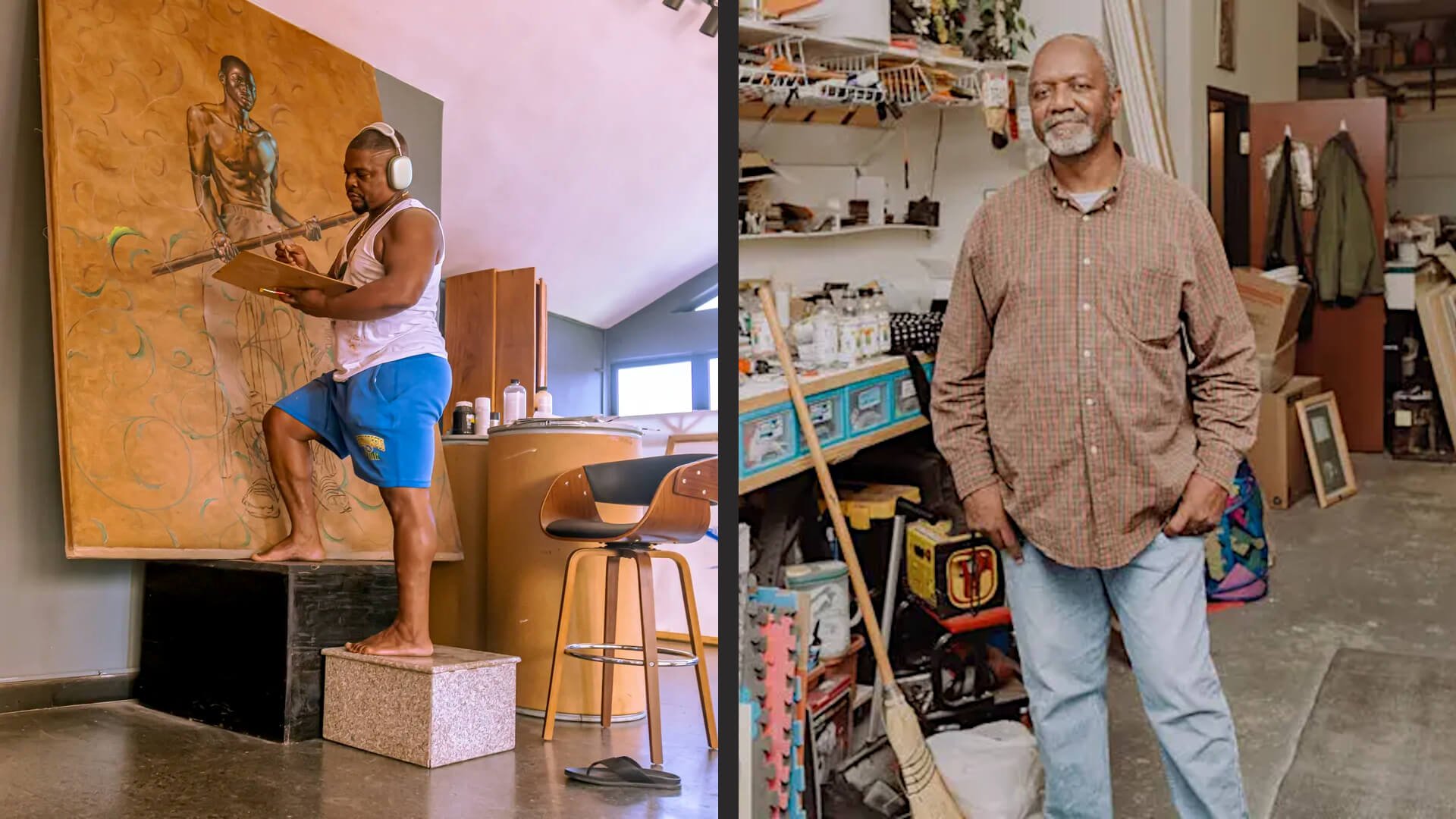How Do Artists Like Kehinde Wiley and Kerry James Marshall Paint Such Large Pieces?
Kehinde Wiley and Kerry James Marshall
It’s a question that might seem purely technical at first: How do artists paint on such massive canvases? The logistics alone—scaffolding, studio space, materials—sound daunting. But as soon as you begin to answer, something unexpected happens. You uncover not just how the paintings are made, but why they’re made this way—and what scale itself can mean, especially in the hands of two of the most influential Black artists working today: Kehinde Wiley and Kerry James Marshall.
Kehinde Wiley: Monument by Design
Wiley is perhaps best known for his portrait of President Barack Obama, but long before that, he was painting everyday people—often young Black men—on a grand scale traditionally reserved for kings, saints, and military heroes. These are not just big paintings; they’re statements of presence. Scale becomes symbolic. What was once denied is now declared.
Former President Barack Obama, right, and Artist Kehinde Wiley, left, unveil Obama's official portrait at the Smithsonian's National Portrait Gallery, Monday, Feb. 12, 2018, in Washington. (AP Photo/Andrew Harnik)
So how does he do it?
Grid System: Wiley, like many artists working at scale, uses a precise grid system to enlarge and transfer his reference photographs onto canvas. This ensures that proportions—especially facial features—remain accurate even when the final surface might measure eight or ten feet tall.
Photography and Digital Compositing: The process begins well before any paint is mixed. Wiley photographs his models in studio sessions where they’re posed in postures drawn from classical European paintings—equestrian portraits, religious icons, scenes of triumph. These images are then digitally composed, sometimes combining multiple references, to plan the final layout.
Kehinde Wiley, Shantavia Beale II (detail), 2012. Oil on canvas. © Kehinde Wiley. Courtesy of the artist and Sean Kelly Gallery, New York.
Artist Assistants: In his large studio, often staffed with up to ten assistants, Wiley delegates different sections of the canvas—clothing, decorative motifs, background filigree—while personally painting the subjects’ faces and hands. It’s a system reminiscent of Renaissance ateliers, where masters like Rubens or Titian relied on workshops to complete large commissions.
Pattern as Code: His ornate, decorative backgrounds—often featuring Rococo flourishes, Islamic patterning, or African textile designs—aren’t just there for visual interest. They speak in coded languages of hybridity, cultural collision, and the legacy of ornament as power.
Kerry James Marshall: Monument by Hand
Kerry James Marshall Painting "Past Times" Goes For Nearly $18.5 Million at Sotheby's Contemporary Art Auction on Nov. 14 in New York.
While Wiley’s studio operates like a well-tuned machine, Alabama native Kerry James Marshall takes the opposite approach. He paints every inch of his vast canvases himself. No assistants. No delegation.
Marshall’s paintings are just as large, but his process is deliberately personal. He has said plainly: “I do everything myself.”
Freehand Drawing and Layering: Unlike Wiley, Marshall doesn’t grid his canvases. He draws directly on the surface, building the composition gradually. He often uses acrylic paint rather than oil, allowing for faster drying and a flatter finish that resists the romantic softness of European traditions.
Rebuilding the Canon: Where Wiley inserts Black subjects into classical frameworks, Marshall builds a new framework altogether. His scenes depict Black people doing everyday things—reading, falling in love, cutting hair, teaching. He doesn’t mimic historical styles; he critiques them, reconstructs them, makes room where there was none.
Ultra-Black Figures: His use of deep black pigment—layered to create nuance and dimensionality—refuses the art world’s bias toward lightness and painterly luminosity. Instead of shadowing around the figure, Marshall brings the figure forward, unapologetically present.
Detail from Past Times (1997) by Kerry James Marshall.
Scale as Presence
What started as a technical question—How do artists paint such large pieces?—turns out to be a question about power. About history. About who gets to take up space, literally and figuratively, on the walls of museums and in the stories we tell about art.
For Wiley, scale is about spectacle and insertion—replacing kings with barbershop patrons, saints with college students. For Marshall, scale is a slow act of reconstruction, each brushstroke a refusal to be left out of the picture.
Both approaches challenge the assumption that monumentality belongs to empire or aristocracy. In their hands, large-scale painting becomes something else entirely: a tool for redefining visibility.
And maybe that’s the deeper answer to the question. How do they paint so big? With skill, yes. With systems, sometimes. But also with intention. With history behind them, and futures in view.





